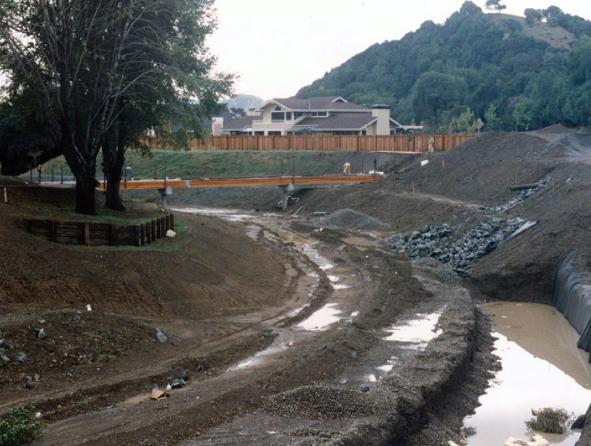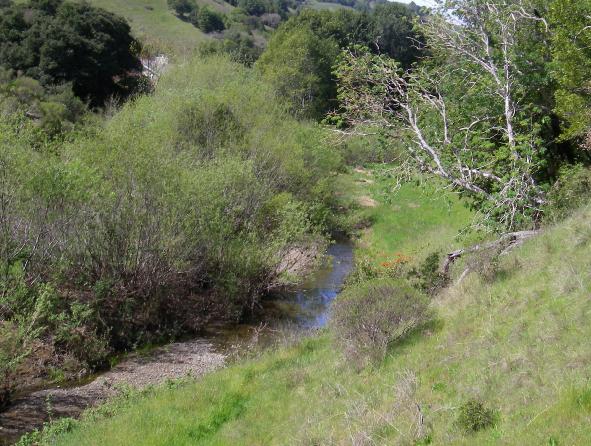|
|
|
 |
 |
|

|
 |
Clearwater Hydrology (CH) Principal, William Vandivere, P.E. analyzed flooding and channel/bank instability in a severely degraded two-mile reach of Miller Creek over a design and implementation period that spanned nine years (1981-1989). He evaluated watershed peak flows and computed pre-project and post-project flood water surface profiles for selected recurrence interval flood events using the USACE’s HEC-2 program. He also assessed hydrologic and geomorphic channel characteristics and designed a creek restoration plan that included floodway setbacks and channel and bank stabilization measures for channel stability and habitat enhancement. The applied stabilization techniques included spur dikes for meander stabilization, planted boulder revetments and planted geoweb. The restoration also included intensive riparian plantings based on a planting and irrigation plan designed by biologists at HT Harvey & Associates, where William held the position of Director of the Hydrology and Water Resources Division from 1988-1994.
This early pioneering restoration effort yielded important lessons in the geomorphic response of incised, laterally migrating channels. The channel stabilization measures employed all performed well, although the actual aquatic habitat elements, including pool development, present in ungrazed reference reaches in the Miller Creek Watershed, have taken over a decade to emerge in the project reach. In retrospect, the project lacked effective instream measures (e.g. large woody debris, native material revetments) to develop and maintain deeper pools which are beneficial to steelhead and other aquatic species. Floodplain sedimentation and the rapid development of a dense, willow-dominated riparian corridor have gradually combined to establish a deeper and narrower bankfull cross-section. This more efficient hydraulic cross-section has increased sediment transport competence through the project reach, which still conveys a significant bed load.
return to project examples
previous example
next example
|
 |
 |
 |

|
 |
|
|
|
 |
 |
 |

Construction phase- summer 1988
Post-construction- early 1990s
Typical condition of pre-project Miller Creek
DATE: Summer 1989
LOCATION: Marin County, CA
CLIENT: HYH Corporation
GOALS: Stabilize and restore heavily degraded intermittent channel and seasonal fish habitat; use minimal structural stabilization and emphasize geomorphic evolution; revitalize the channel riparian corridor and stream shading; provide 100-yr. flood protection for new residential subdivision.










